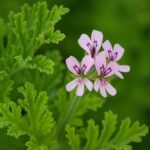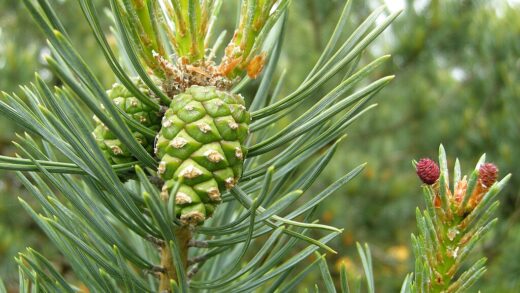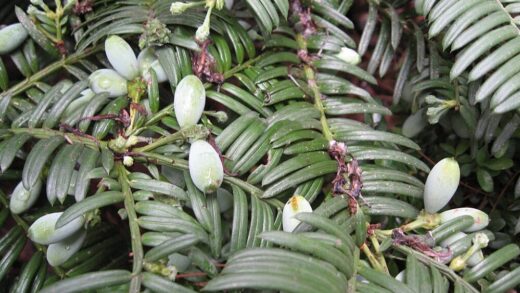In most Hungarian climates, Bidens ferulifolia is grown as a tender annual, celebrated for its vigorous growth and profuse blooming throughout a single season, from spring until the first hard frost of autumn. Its sensitivity to cold and inability to survive freezing temperatures mean that it will not typically survive the winter if left outdoors. However, for the dedicated gardener who wishes to preserve a particularly beautiful or unique specimen, overwintering the plant indoors is a viable option. This process involves bringing the plant into a protected environment before the first frost and providing it with the minimal conditions it needs to survive the dormant winter months, ready to be revitalized the following spring.
The success of overwintering begins with selecting the right plant. Choose a specimen that is exceptionally healthy, vigorous, and completely free of any pests or diseases. Bringing a stressed or infested plant indoors is not only unlikely to succeed but also poses a significant risk to any other houseplants you may have. A compact, well-structured plant is often easier to manage indoors than a very large, sprawling one. It is a proactive process that requires planning before the cold weather sets in, as waiting until after the first frost has damaged the plant is too late.
Preparation for the move indoors should begin in the late summer or early autumn, well before the first frost date is on the horizon. Start by carefully inspecting the chosen plant for any signs of pests like aphids, spider mites, or whiteflies. It is crucial to treat any infestations while the plant is still outdoors. A thorough spray with insecticidal soap or neem oil, ensuring complete coverage of all plant surfaces, including the undersides of leaves, is a wise precautionary measure even if no pests are visible.
Before bringing it inside, it is also highly recommended to prune the plant back significantly. Cut the stems back by at least half, or even by two-thirds. This drastic haircut reduces the overall size of the plant, making it more manageable indoors. It also removes any leggy growth and potential pest-hiding spots, and it lessens the burden on the root system, which will be less active during the winter. This pruning may seem severe, but it encourages the plant to enter a state of dormancy and sets it up for a flush of fresh, vigorous growth in the spring.
Creating the right indoor environment
Once the plant has been prepared, the next crucial step is to provide it with a suitable indoor environment for its winter dormancy. The ideal location is a place that is cool but remains consistently above freezing. An unheated but attached garage, a frost-free basement with a window, or a cool porch that is enclosed for the winter are all excellent choices. The target temperature range for overwintering is typically between 5 and 10 degrees Celsius. These cool temperatures are essential for signaling the plant to remain dormant and not to waste its energy reserves by attempting to produce new, weak growth.
More articles on this topic
Light requirements during the winter dormant period are minimal but not non-existent. The plant does not need the intense, direct sunlight it craves during its active growing season. However, it does need some bright, indirect light to maintain basic life processes. A spot near a north-facing window or a window that receives some indirect light for a few hours a day is usually sufficient. Avoid placing it in a warm, sunny south-facing window, as this combination of warmth and light can trick the plant into breaking dormancy prematurely, resulting in weak, etiolated growth that is susceptible to pests.
Humidity is generally not a major concern during the dormant period, as the plant’s metabolic activity is very low. However, the air in centrally heated homes can become extremely dry during the winter. While the cool location you have chosen should mitigate this, ensure the plant is not placed near any heat sources such as radiators or vents, which would not only be too warm but would also create excessively dry conditions. Good air circulation is still beneficial to prevent any potential fungal issues, so avoid overly stuffy or stagnant locations.
The goal of the indoor environment is not to encourage growth, but simply to keep the plant alive in a state of suspended animation until spring returns. By providing a cool, frost-free location with low to moderate light, you are mimicking the conditions of a mild winter that the plant can endure. This resting period is vital for the plant to conserve its energy, which will then be available for a burst of new growth when it is reintroduced to warmer and brighter conditions.
Winter care routine
The care routine for an overwintering Bidens is drastically different from its summer regimen and can be summarized in one word: minimal. The most significant change is in watering. Because the plant is dormant and not actively growing, its water needs are dramatically reduced. Overwatering is the single greatest threat to an overwintering plant and will almost certainly lead to root rot. The soil should be allowed to dry out almost completely between waterings.
More articles on this topic
A good rule of thumb is to check the soil once every three to four weeks. Water just enough to prevent the soil from becoming completely bone dry and pulling away from the sides of the pot. When you do water, provide only a small amount, perhaps a cup of water for a medium-sized pot, rather than the thorough drenching you would provide in the summer. The objective is simply to keep the roots from desiccating entirely. It is far better to err on the side of being too dry than too wet during the winter months.
Fertilization should be completely suspended during the overwintering period. The plant is not in an active growth phase and therefore has no use for the extra nutrients. Feeding a dormant plant can damage the roots by causing a buildup of fertilizer salts in the soil and can also encourage weak, inappropriate growth that will not be sustainable in the low-light conditions. Do not provide any fertilizer from the time you bring the plant indoors until you begin the process of reawakening it in the spring.
Periodically, it is a good idea to inspect the plant for any signs of trouble. Check for the emergence of pests that may have survived the initial treatment, such as mealybugs or scale, which can sometimes appear in indoor conditions. Also, check for any signs of disease or rot. Remove any yellowing or dead leaves that may appear, as this helps to maintain good air circulation and removes potential sites for fungal growth. This minimal but observant care is all that is needed to see the plant safely through the winter.
Reawakening in the spring
As the days begin to lengthen and the first signs of spring appear, typically around late February or March, it is time to begin the process of gradually reawakening your overwintering Bidens. This transition should be slow and gentle to avoid shocking the plant. The first step is to move the plant from its cool, dormant location to a slightly warmer and brighter spot. This signals to the plant that the growing season is approaching.
At this time, you can also perform any necessary repotting. Gently remove the plant from its pot and inspect the roots. Trim away any that appear dead, brown, or mushy. It can be repotted into the same container with fresh, high-quality potting mix, or moved to a slightly larger pot if it is significantly root-bound. This provides the plant with a fresh supply of nutrients and an improved soil structure to support the new growth that is about to begin.
After moving it to a brighter location, you can also begin to gradually increase the frequency of watering. Start by watering it thoroughly once, allowing the excess to drain away. Then, return to a more regular schedule, watering whenever the top few centimeters of soil feel dry to the touch. This increased moisture, combined with the warmer temperatures and brighter light, will stimulate the plant to break its dormancy and start producing new shoots and leaves.
Once you see signs of active new growth, you can begin fertilizing again. Start with a half-strength solution of a balanced, water-soluble fertilizer to avoid burning the new, tender roots. As the plant’s growth becomes more vigorous, you can increase the fertilizer to full strength and apply it according to a regular schedule. This carefully managed reawakening process will transform your dormant plant back into a vibrant, healthy specimen, ready to be hardened off and moved outdoors once all danger of frost has passed to begin its magnificent summer display all over again.
















